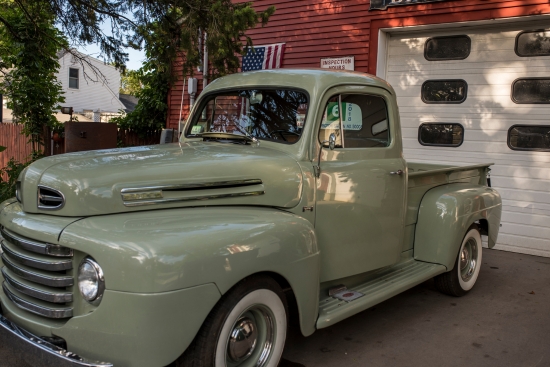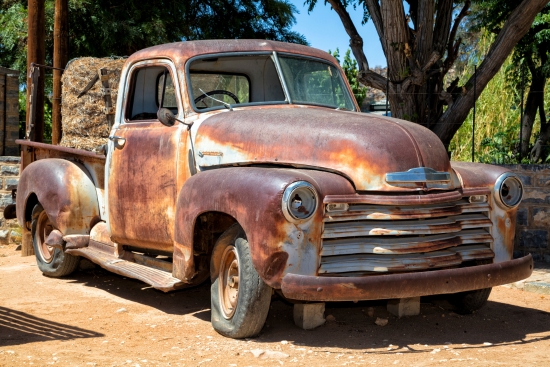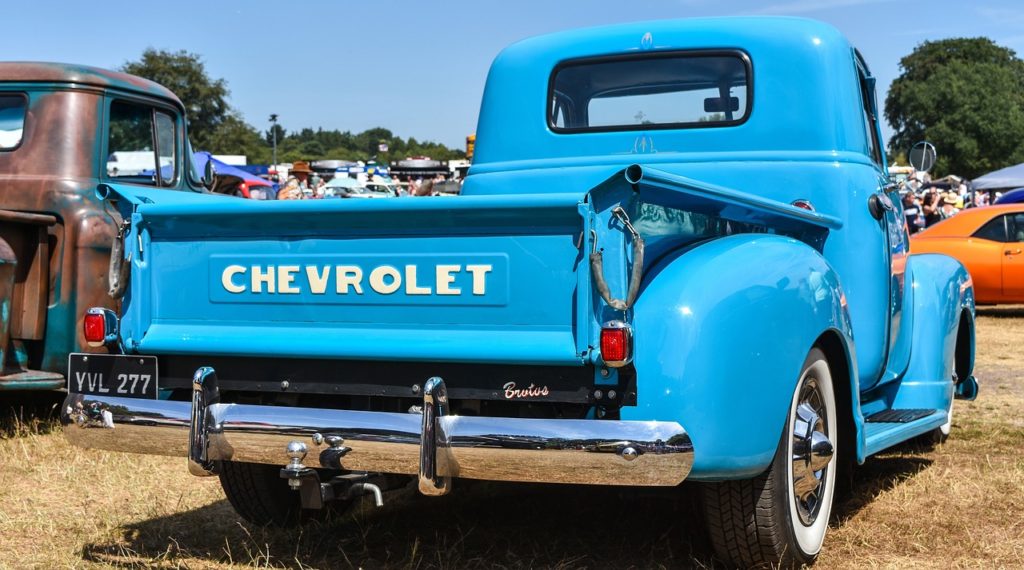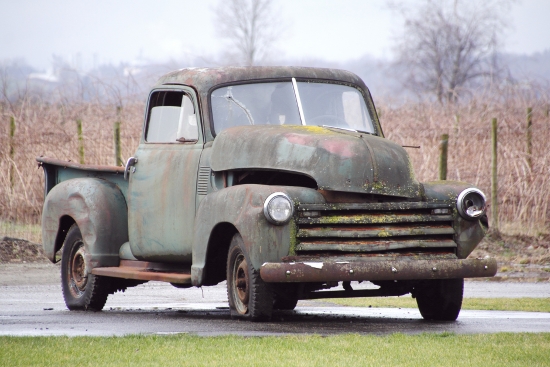It takes about 1000 hours to restore a truck, and that is with some experience. It not only requires significant time, but money, space, tools, and skills are required. When you are doing a truck restoration sometimes you run into a job that is beyond your skillset or you just don’t have the tools. In my experience, it is often best to outsource in those situations. In this article, I’ll share where to find a good truck restoration shop, how to evaluate them, and how to leverage them to your advantage. I’ll also share my experience with the truck restoration near me.
Find Truck Restoration Near Me…
If you are looking for “Truck Restoration Near Me”, see the map below…
Working a restoration on a truck requires space, tools, time and money. In addition, you need some automotive skills and have a sense of where to find parts. It is hard to be an expert on everything and so it makes sense to outsource certain jobs. This is what led me to look for truck restoration near me and find some help for the jobs I either don’t like or don’t have the skills or tools for.
How the Truck Restoration Near Me Works
When I say truck restoration shop, many people think body shop. There is some work that you could use a body shop for, but I actually mean a shop that restores trucks as their primary business. Shops that can restore any truck from a semi to a dump truck or a classic Ford pickup to a newer F150.
These types of restoration shops are filled with knowledgeable mechanics with specialties in a variety of automotive disciplines. Whether you need fabrication, paintwork, engine rebuilds, or a complete teardown and restoration they can handle it.
At the truck restoration near me, you could in theory have a junk truck towed there and then pick it up when it is restored. Let’s be honest though, that’s isn’t any fun and that is very expensive. What I suggest though is leveraging a truck resto shop as needed. Use them to do specific jobs that require specialized skills or tools. Also, use them to help you plan and assess your project upfront.
Why Get Help On Your Truck Restoration Project?…
Back in the day I was stubborn and thought that I must do the entire project myself. Maybe bring in a few buddies to hold a transmission in place while I bolt it. Over time though I have discovered for certain jobs it’s better to hire a pro shop. Some are jobs I just dislike while others are jobs I just don’t do like a pro. Doing rust work for example is something I don’t mess around with. I can do it, but it just isn’t fun…so I outsource.
Outsourcing to a pro restoration shop lets you work on another part of the project while the shop works in tandem. It shortens the whole process and time to completion.
Here are some general tasks you can hire a professional shop for:
- Framework
- Rust removal
- Fabrication
- Instrument & Gauge Cluster Upgrades
- Powertrain mods and upgrades
- Engine or transmission rebuilds
- Suspension mods and upgrades
- Custom Paintwork
- Any frame off work
- Electrical work and diagnostics
- Performance upgrades
- Tuning with a dyno
- Interior upgrades
- Headlight restoration, particularly on glass headlamps
Doing things on your own means potentially sacrificing quality and making tasks take longer than they should. While you might spend money to outsource, you are likely to get it right the first time. I’ve probably spent just as much money on mistakes I should have hired someone to do in the first place.
Word of Advice Before You Start an Antique Truck Restoration
If you plan on doing a truck resto on an antique vehicle, find your local restoration shops first. Call around and find out who does what and what they charge. You might want to choose a variety of shops based on specialty. For example, you have your transmission rebuilt by one shop but have the upholstery done at another.
When you call around get some tips from them and tell them what type of antique truck you are working on. These places know how to find the right parts, and they network with other businesses. In my experience, they are happy to provide you with general guidance and some tips. They can also help you frame your budget and time constraints, which is helpful if you haven’t bought the vehicle yet.
When You Call a Shop Be Specific About The Type of Restoration
When you outsource work it is important that the shop understands your restoration process and philosophy. Do you want the vehicle to be all original or are you injecting some personality and style? For aesthetics work do you want only colors that were available in the year of production, a patina look, or perhaps full custom paint with flames?
Outsourcing to a truck restoration means putting your truck in their hands. There may be times when they make decisions on your behalf. They need to understand what you want and how original you want it. When you hire a shop be clear about your requirements.
Pain Points to Outsource…
Here are some general areas to consider getting help with. Not suggesting you outsource all of this, but these are good areas to seek help.
Body Work
Whether you need paint or a new panel fabricated, there are many shops that provide these services.
On an antique car or truck, the paint is going to fade over time. A pro custom paint shop will fully take off the shell and paint the exterior on a spit. These places also have expert painters so if you are looking for something custom like flames or pinstripes they can do it.
Other bodywork worth outsourcing is rust repair and restoration. Knocking minor rust off is one thing, but dealing with trucks with huge areas of it is another. While your aim should be to choose a truck with little to no rust, it is something that comes with doing a resto project. If a pro shop can’t work the rust out, you could also consider having a new part fabricated.
Mechanical Work
While this first stage is some of the most fun work in a restoration, it isn’t for everybody. When it comes to installing the parts, most of this work is pretty standard and you can do it yourself. Where these jobs get difficult is when you need to rebuild an engine or a transmission. Rebuilding these components involves completely disassembling them, inspecting each piece, and replacing any parts that are worn out. While many restoration projects will first consider getting a used part to save money, a rebuild is actually the more reliable option and will add better future value.
Searching for Original Parts
When a truck sits for a long time parts rust, corrode, and eventually seize. This means you will need to know where to find replacement car parts. While the junkyard is certainly a great option to keep things original, finding very specific parts from specific years gets hard. An auto restoration shop will know where to find the rare parts. They know the websites, the forums, the junkyards, and the catalogs, and have connections. Don’t be afraid to call them for help finding parts. You can use them to find the original parts, and then pay them a fee for finding them.
Electric and Wiring Work
Wiring work in a restoration is unavoidable. Most projects involve a truck that has been sitting outside. That means the wires are exposed to moisture and may even have mice chewing through them.
Wiring an old truck isn’t to bad. Wiring a truck with a computer starts getting more complicated. If you don’t have experience with automotive electric work, this is good to outsource. It can be as simple as having them lay the wiring harnesses correctly or completely wiring and replacing the dash and instrument clusters.
Interior Work
Interior work can be fast from re-carpeting to re-upholstering leather seats. Interior work may also involve identifying leaks and mold in the cabin. While removing lite mold isn’t too bad, you really need to find where the water or moisture is coming from. Water can come in one area and run down some trim to leak in another. Pro restoration shops know how to find and seal this type of issue.
Choosing the Best Truck Restoration Shop
You can pick a shop that does complete restoration work from truck bed to cab to hood or does one of work like a tranny rebuild. I tend to lean towards specialty shops, but it will depend on how much work you are outsourcing. When you look for specialty shops you can control your budget a little better and ensure you are always getting the best in the business on your project.
When picking vehicles for a truck restoration near me here is my process:
- Call around to different places, get quotes, and talk shop.
- Get before and after pictures of their past projects.
- Read reviews and testimonials on Yelp and Google.
- Get them to estimate how long the work will take.
- Ask about what guarantees and assurances do I have.
DIY Truck Restoration Tips
Essential Tools and Equipment
Embarking on a DIY restoration of classic trucks requires more than just enthusiasm; it demands the right parts and tools. First and foremost, a well-equipped garage is non-negotiable. You’ll need basic hand tools like wrenches, screwdrivers, and pliers. For more intricate tasks, power tools such as a drill and a grinder are indispensable. Don’t forget a good quality jack and stands for safely elevating your vehicle.
When dealing with restorations of classic trucks, especially the restoration process of the cab and body, a sandblaster and a painting setup are crucial. These tools help you strip old paint and rust, preparing the surface for a fresh coat. Additionally, investing in a high-quality welder can be a game-changer, especially when you need to repair or fabricate metal parts.
Skills Needed for DIY Restoration
Restoring a truck is a journey that tests and builds your skills. Basic mechanical knowledge is a given – you should be comfortable with tasks like changing brakes and fluids. However, as you delve deeper, you’ll realize the need to understand more complex systems like the engine and transmission.
Bodywork is another skill set altogether. It starts from the beginning stages of dent removal to the final stages of painting and detailing. Precision and patience are key here. You’ll also need a good eye to determine the shape and alignment of body panels.
Electrical work is often the most challenging part of restoring a truck. Learning to read wiring diagrams and handle wiring is essential. Remember, new parts might not always fit perfectly into an old truck or systems, so adaptability is crucial.
When to Call in the Professionals
Despite your garage and best effort, there comes a point when you might need to decide to call in the professionals. Complex engine overhauls, advanced electrical issues, or specialized restorations like installing conversion kits are instances where expert intervention is advisable.
If you’re at a stage where mistakes could be costly or dangerous, it’s time to compare DIY vs. professional help. For instance, if you’re unsure about the structural integrity of new parts on the truck after a repair, it’s wise to seek a professional opinion.
In conclusion, DIY truck restoration is a fulfilling endeavor, but it’s important to recognize your limits. Balancing DIY effort with professional expertise ensures that restoring your classic truck is not only aesthetically pleasing but also safe and reliable.
Truck Restoration Near Me – Conclusion
When you start a truck restoration project, you can’t foresee all the issues. Sure you’ve looked under the hood already, but somehow you missed the there is a structural issue on the frame. Doing it yourself is of course ideal, but in some instances, it just isn’t practical. If this is your dream ride, then it deserves the best and that might not be up to your skill level.
Figure out up front where you need help. Call around and ask about services while you are still in the planning phase of your project. This will help you budget your money and figure out who are your allies. Most of these shops have worked a truck just like yours before in the past. That is my experience with the truck restoration near me.






